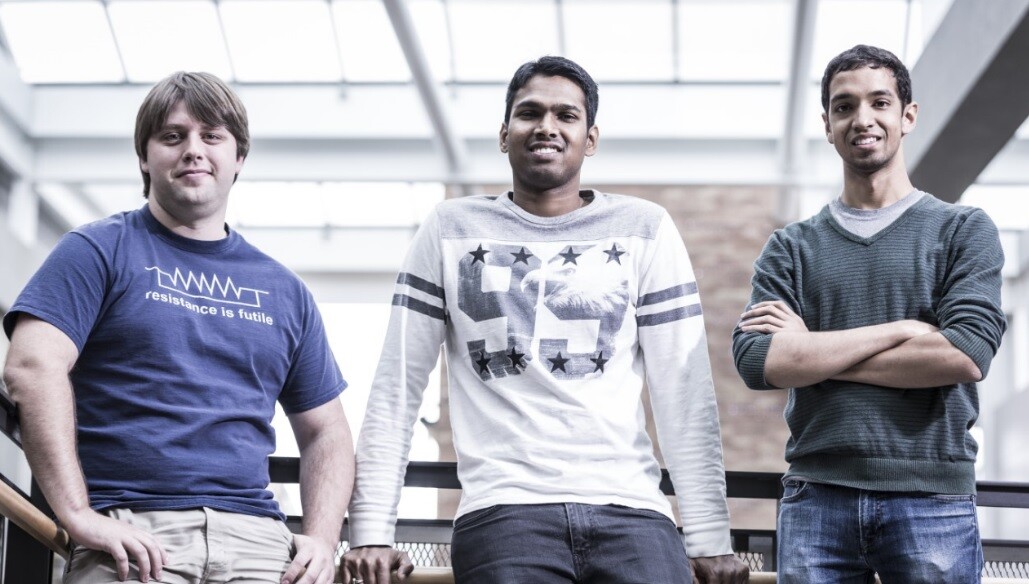University of Washington (UW) engineers have developed a new way to bring internet connectivity to low-power electronic devices such as brain implants and smart contact lenses. The interscatter communication system, which creates Wi-Fi transmissions from reflected Bluetooth signals using a fraction of the power normally required, has the potential to impact everything from blood sugar monitoring to splitting credit card bills.
Interscatter enables low-power devices to communicate by using technology already existing in common mobile devices, such as Bluetooth, Wi-Fi or ZigBee radios, to act as the transmitters and receivers for the reflected signals. And, according to the researchers, it is able to create these Wi-Fi signals whilst consuming 10,000 times less energy to do so than standard methods.
"Instead of generating Wi-Fi signals on your own, our technology creates Wi-Fi by using Bluetooth transmissions from nearby mobile devices such as smartwatches," said Vamsi Talla, a research associate in the UW Department of Computer Science & Engineering.

The system relies on a communication technique known as radio wave backscatter (a diffuse reflection of radio waves back in the direction from which they originated), to enable devices to interchange data by manipulating and reflecting existing signals.
The small sizes and often difficult locations of implanted electronics in the human body often means that power supplies are limited, which puts conventional wireless communication out of play. As a result, medical devices such as smart contact lenses have been unable to send data using Wi-Fi to smartphones without bulky, clumsy external power supplies. These same limitations also restrict other nascent technologies such as brain implants that reanimate limbs or monitor internal organs.
"Preserving battery life is very important in implanted medical devices, since replacing the battery in a pacemaker or brain stimulator requires surgery and puts patients at potential risk from those complications," said Joshua Smith, associate professor of electrical engineering and of computer science and engineering. "Interscatter can enable Wi-Fi for these implanted devices while consuming only tens of microwatts of power."

Building on previous work in this area, the researchers in UW's Networks and Mobile Systems Lab and Sensor Systems Lab designed and created prototype devices that specifically target previously impractical applications, building interscatter communications systems for a smart contact lens and an implantable neural recording instrument which can directly communicate with smartphones and smartwatches.
"Wireless connectivity for implanted devices can transform how we manage chronic diseases," said Vikram Iyer, a UW electrical engineering doctoral student. "For example, a contact lens could monitor a diabetics blood sugar level in tears and send notifications to the phone when the blood sugar level goes down."
To demonstrate such interconnectivity, the team used a smartwatch to send a Bluetooth signal to a smart contact lens fitted with an antenna. This transmission was then converted into a "single tone" signal by removing the randomizing applied to keep Bluetooth communications secure, then backscattered that signal so that the data coming from the contact lens could be encoded into a standard Wi-Fi packet easily readable by any Wi-Fi enabled device.
"Bluetooth devices randomize data transmissions using a process called scrambling," said Shyam Gollakota, assistant professor of computer science and engineering. "We figured out a way to reverse engineer this scrambling process to send out a single tone signal from Bluetooth-enabled devices such as smartphones and watches using a software app."

Developing the system was not all easy sailing, however. One of the major difficulties encountered when creating a backscatter signal is that there is a mirror image of the signal generated at the same time, which chews up bandwidth and plays havoc with networks that connect via the mirrored Wi-Fi channel. To solve this problem, the UW researchers used a radio technique known as single sideband, where one half of the modulated signal (in this case the mirror image) is filtered out.
"That means that we can use just as much bandwidth as a Wi-Fi network and you can still have other Wi-Fi networks operate without interference," said UW electrical engineering doctoral student Bryce Kellogg.
The UW team has also demonstrated that the techniques can be applied to more mundane technologies, such as credit cards. The researchers created smart credit card prototypes that are able to directly exchange data with one another by bouncing back Bluetooth signals transmitted by a smartphone. The team believes that this technology will provide opportunities for inbuilt applications to perform simple data exchange tasks (such as users splitting bills by just tapping their credit cards together) that would not normally be possible.
"Providing the ability for these everyday objects like credit cards – in addition to implanted devices – to communicate with mobile devices can unleash the power of ubiquitous connectivity," said Gollakota.
This new technique will be presented in a paper on August 22 at the Association for Computing Machinery's Special Interest Group on Data Communication (SIGCOMM 2016) conference in Brazil.
The video below demonstrates the technology in action.
Source: University of Washington








